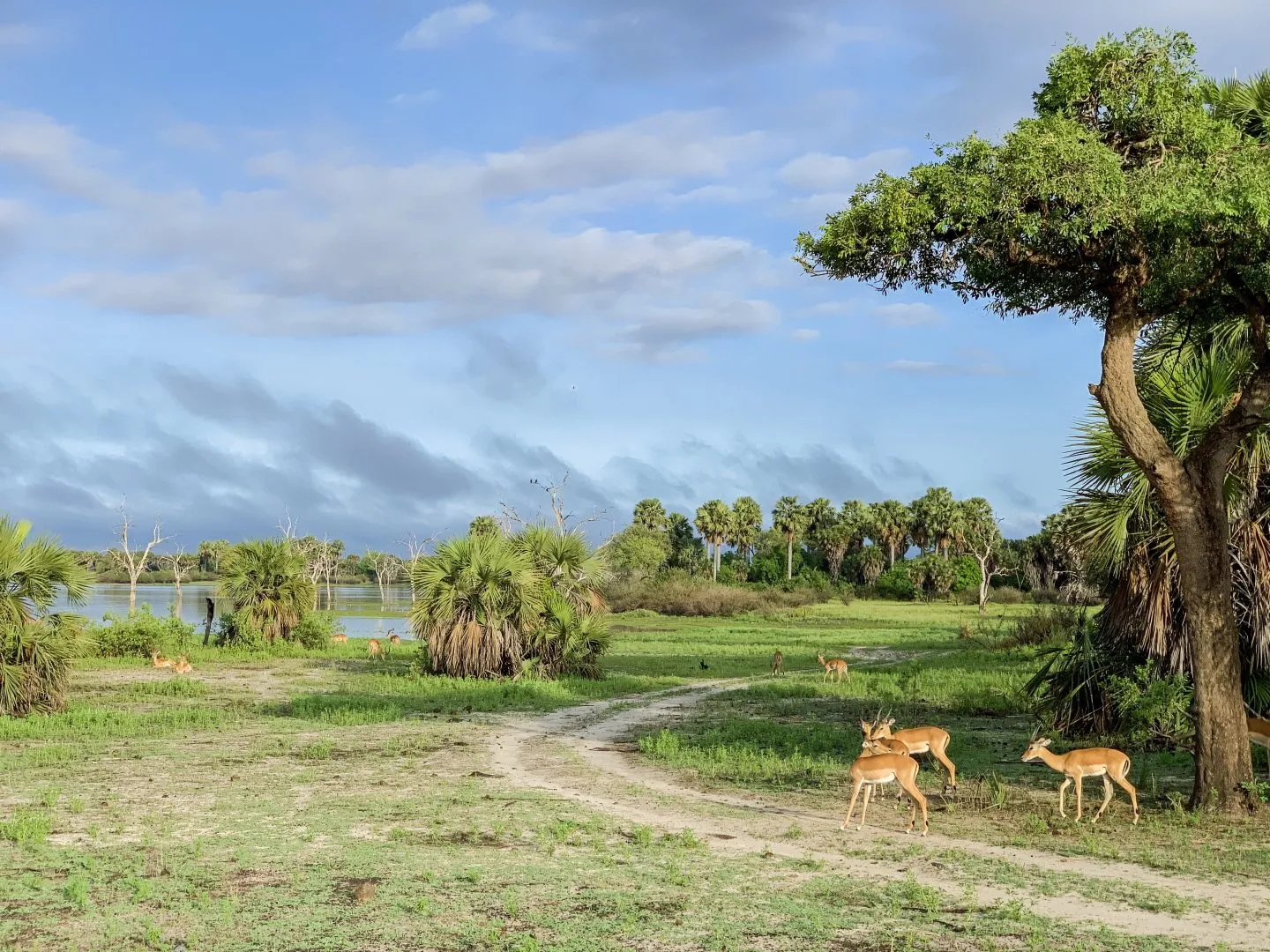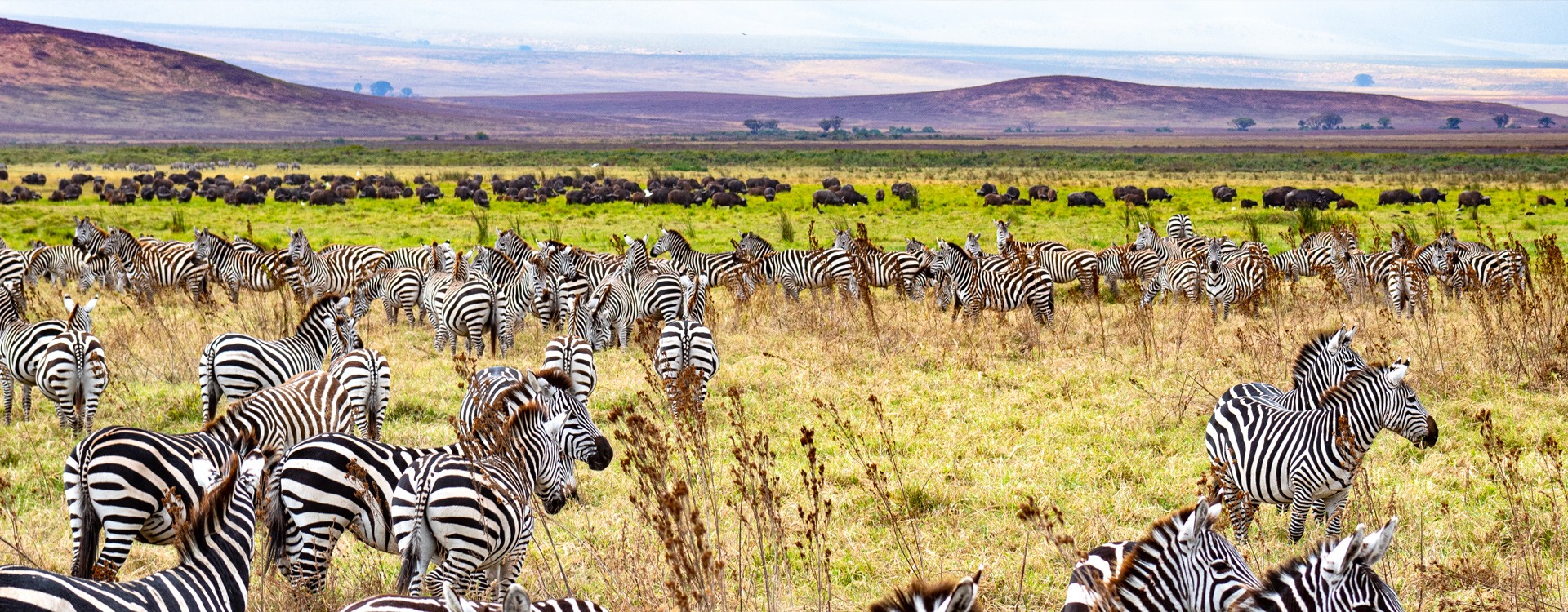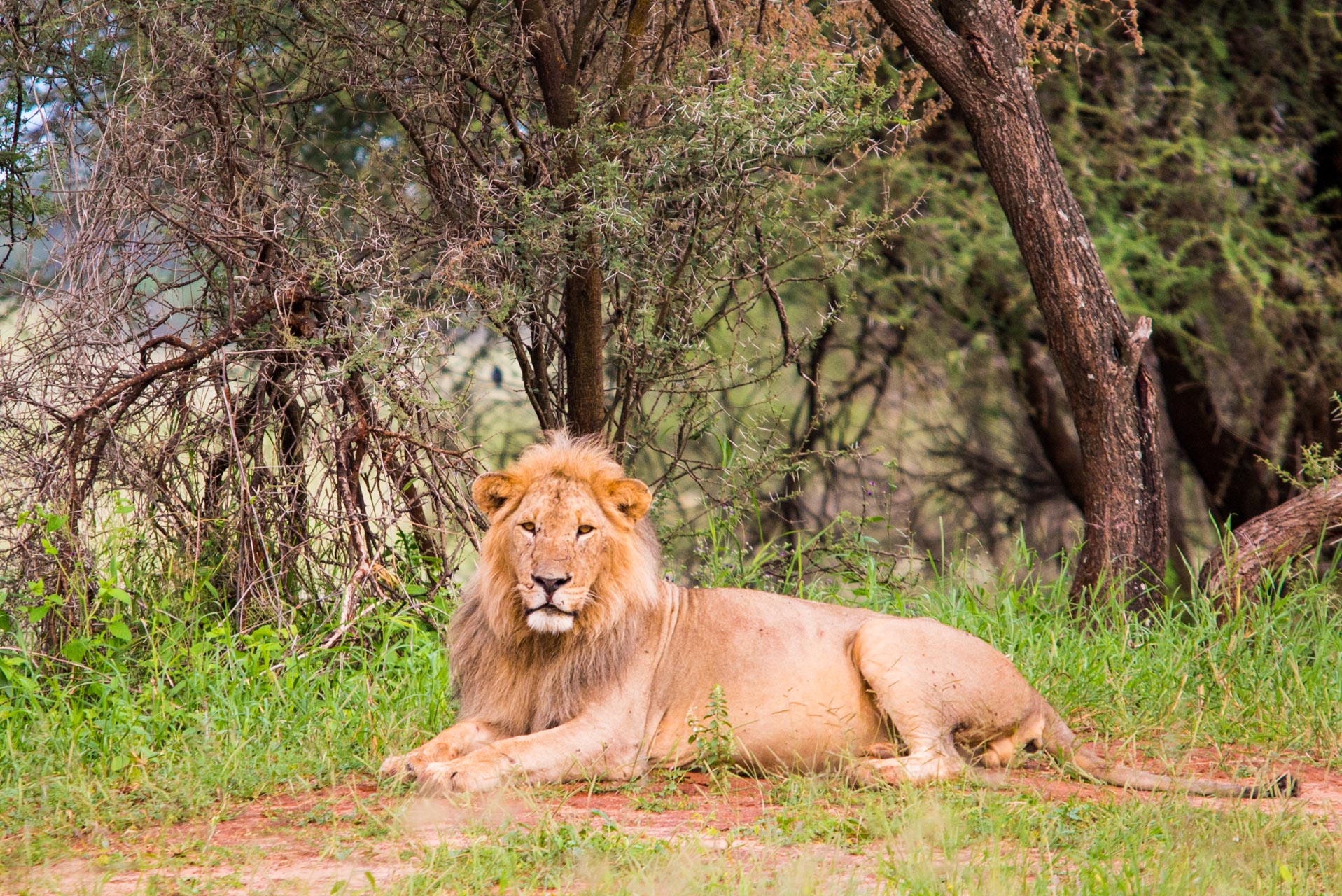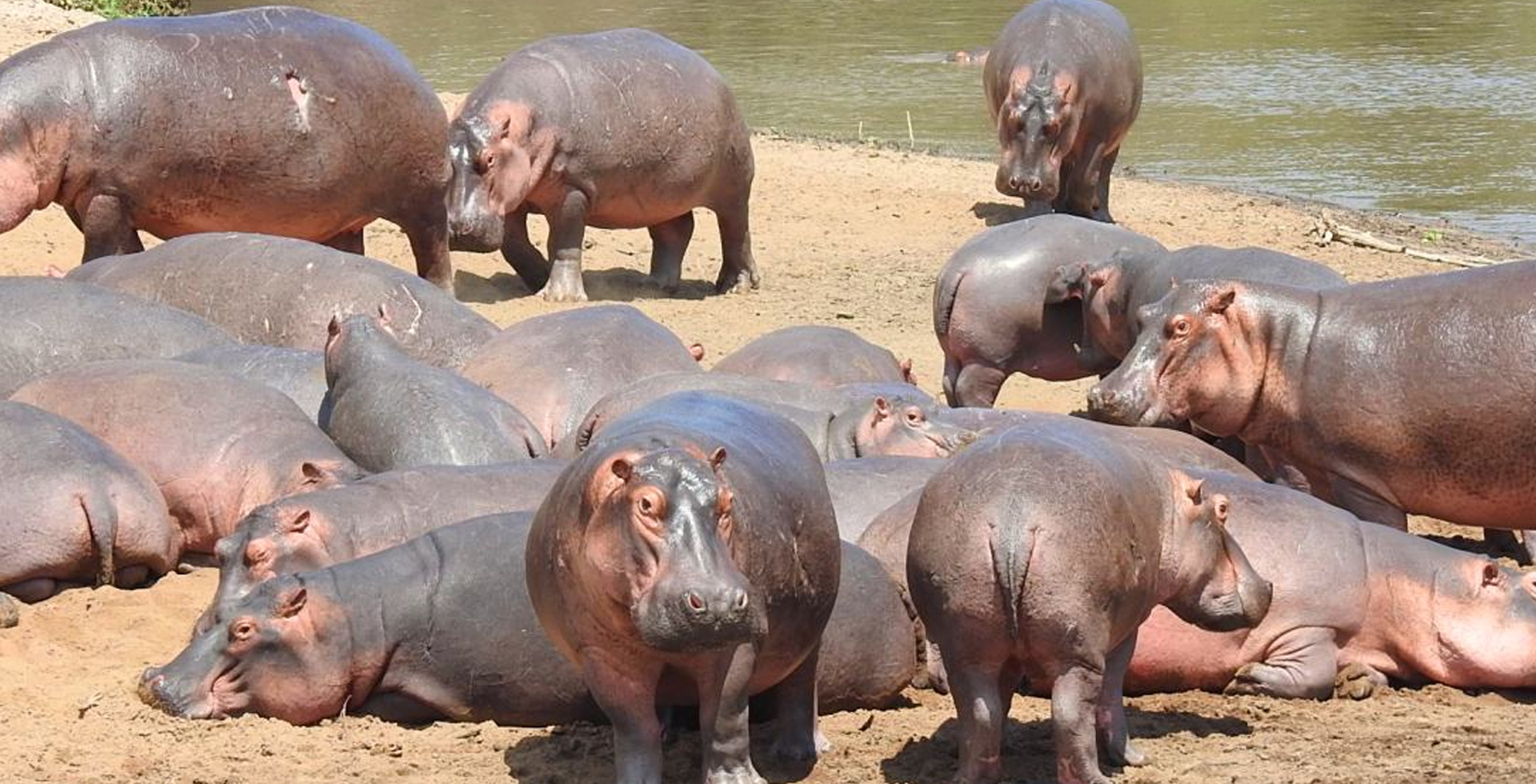Southern Tanzania Destinations
Tanzania Overview
Possibly east africa's most relaxed nation, tanzania is home to the vast serengeti, mount kilimanjaro, zanzibar and a host of beautiful lesser-known parks.
With a diverse range of cultures and wildlife, and you will experience some of the most magnificant views and hospitality on the planet. Karibu!
Nyerere National Park Tanzania (Selous Game Reserve)

The Selous Game Reserve is off the beaten path, and only 1% of Tanzania’s tourists heading down to this part of the country.
It is often seen as one of Africa’s last true wilderness areas - its savannah spans as far as you can see, and you can go days without ever seeing a car or another traveller.
One of the best sights within this game reserve is the Rufiji River, a gigantic river with a high density of crocodiles and hippos. Together with the Great Ruaha River, it creates a river delta, making for formidable game viewing and some of the most exciting boat safaris in East Africa.
The Selous Game Reserve was first designated as an area for protection in 1896 by the German Governor of Tanganyika Hermann von Wissmann.
In 1905, it was developed into a hunting reserve and in 1922 received its name - Selous Game Reserve - and was formally founded (its use as a hunting reserve is no long over).
It was named after the famous hunter and friend of colonialist Cecil Rhodes, Frederick Courtney Selous. He died in 1917 at the hand of a German sniper and was buried in the game reserve in Beho Beho.
Only in the 1940s did it reach such a huge size, and in 1982 it was made a UNESCO World Heritage Site. In 2019, the Tanzanian government under President Magufuli carved out a sizable chunk of the territory to create a new national park, put under the control of TANAPA, the national park agency.
President Magufuli also planned the erection of a mega dam to support surrounding villages with hydroelectricity. This decision has been hugely criticized by conservationists and economists alike.
When to visit Selous Game Reserve
Like most national parks in Tanzania, the dry season from June to October is perfect for game viewing, as the vegetation is more sparse, making it easier to spot animals.
March to May and late October to mid-December is the rainy season, which makes many of the roads impassable and animals harder to spot.
For bird enthusiasts, we also recommend the shorter dry season from mid-December to March, as many migratory birds then settle in Selous. If the scarce wild dog is what you are after, June to August is perfect, as this is their denning season.
Mikumi National Park

Mikumi was made a National Park in 1964 and is 3,230 sq. km (1,250 sq. miles) in size. This enormous area links the Julius Nyerere National Park (formerly Selous) with the forested abundance of the eastern arc mountains, and so is an important part of a huge ecosystem of rivers, flood plains, forests and woodlands.
The northern plains that surround the Mkata River are readily accessible and is the best place to go for wildlife.
A good network of tracks means that a wide variety of wildlife including buffalo, cape hunting dog, cheetah, and lion are approachable and can be enjoyed at close quarters.
Wildlife
Mikumi abounds with big game, including buffalo, elephant, the big cats, hippo, crocodile, giraffe, zebra, eland as well as smaller species. Some of the more unusual species such as sable antelope, Lichtenstein’s hartebeest and greater kudu inhabit the wooded areas surrounding the Mkata plains and are more of a challenge to find. But they’re there!
Getting there
Air.
The Mikumi National Park airstrip is at Kikoboga and scheduled flights operate daily from all the main centers in Tanzania, but often routing via Dar es Salaam.
Road.
An approximate 4 hour drive, (283 km) on a good surfaced road connects Mikumi to Dar es Salaam via Morogoro. This road also connects to Udzungwa, Iringa and Ruaha.
Its proximity to Dar es Salaam makes Mikumi a popular option for weekend visitors from the city, or for business visitors who don’t have to spend a long time on an extended safari itinerary.
Ruaha National Park

Ruaha National Park is vast, and was upgraded to a National Park in 1964 and was further enlarged in 2008 to its current size of 20,226 sq. km making it Tanzania’s second largest National Park. This makes it about the size of New Jersey in the United States, or of the whole country of Wales in the UK!. In fact Ruaha is part of a much larger ecosystem of about 45,000 sq. km. Nature reigns supreme across this enormous area.
And what an area! Rivers, mountains, plains, rock kopjes, swamps, dense woodlands, open savannas spread out across an immense landscape that has barely been touched by man. Wooded hillsides, many with rounded granite outcrops and scatterings of huge baobabs, are dissected by sandy, rock strewn seasonal rivers and streams running down to meet flood plains and seasonal swamps, many of which end up in the Great Ruaha River.
Seasonal rivers are lined by scattered groves of palms, thorn trees, fig trees and sausage trees providing midday shade for all sorts of wild animals. They are key features to enjoy during game drives, especially during the dry season when only pools remain or the elephants have to dig in the sand for water. This is Africa of a bygone era – the world as it was before modern man.
The only perennial river is the Great Ruaha River, which flows along the southeast boundary, but even this becomes only a trickle in places at the end of the dry season in October.
Ruaha’s dry season is between June and October and its wet season is November to May. Temperatures range between 16 - 27 °C.
Wildlife
Wildlife is especially varied because of the overlap of eastern and southern African wildlife zones, so besides regular big game such as elephant, buffalo, and plains animals, the more unusual species such as the antelopes sable, roan, greater and lesser kudu are quite common.
Cape hunting dog are also often encountered. Ruaha is also a great place for the big cats lion, leopard and cheetah.
Birdlife is also understandably rich. In fact outstandingly so with over 550 species having been recorded, and an enormous variety of birds of prey Perhaps the most abiding joy of Ruaha is the wild character of the land within which so many animals roam. It is a land of starry nights, cool mornings and baking mid-day heat. A land of monumental storms in the rainy season, and desiccating winds in the dry.
This is an Africa that sets it mark on you and from which it is tough to turn away; and one that you never forget. This is why it is so worth the long journey to get here, be it by road or air.
Getting there
Air.
There are both scheduled and chartered flights into the park mainly from Arusha, Dodoma, Kigoma and Dar-es-salaam. Park’s airstrips are located at Msembe and Jongomero.
Road.
Driving to Ruaha is about 130km from Iringa town and 625 km from Dar-es-salaam city. The road into the park is passable throughout the year
Katavi National Park

Tanzania is so full of ‘don’t miss’ wildlife destinations that safari enthusiasts will just have to accept that they cannot all be done in one safari. However, Katavi Plains is a must for the enthusiast, and being far away and remote but also within 30 minutes flying time from Mahale, it can be combined well with the Mahale Mountains.
Katavi at 4,471 sq. km is large and protects only part of an even larger ecosystem. Extensive open plains alternate with broad-leafed woodlands, flat-topped acacia bush country and wide swamps and lakes.
This is a highly seasonal place only accessible in the dry months from July to October. It is extremely remote, and this very remoteness is its strength for during the long wet season from October to May (8 months) the wild animals have free domain over a huge hinterland of several thousand square kilometers both within and outside the Park, virtually untouched by man. They can move, live and multiply here. As the dry season arrives they are forced slowly back to the swamps and lakes of Katavi, where they get more and more concentrated.
Large areas of the Park are hardly ever visited such as the Mlele escarpment with its waterfalls, Lake Paradise and the country in between.
Katavi is one of those places that have not changed since early European explorers first started entering Africa’s interior, and it is the kind of place that gave this continent its reputation for being impenetrable, of huge scale and swarming with big game. You will need at least three days there.
Wildlife
By September, elephant can be seen daily and the numbers of buffalo are phenomenal with herd upon herd of 1000 strong grazing the dried-out flood plains. Hippo and crocs numbering in thousands get increasingly confined to shrinking pools and mud wallows, with regular fights erupting amongst the hippo bulls. Large herds of topi also concentrate into the flood plains. The predators are here in force, especially lion and spotted hyena. Male lion are characterized by very short manes, but large powerful bodies.
In the hinterland are huge expanses of Acacia and broadleaved woodlands (Miombo), and it is here that Roan and Sable antelope are found, as well as Lichtenstein’s hartebeest.
Our Partners






